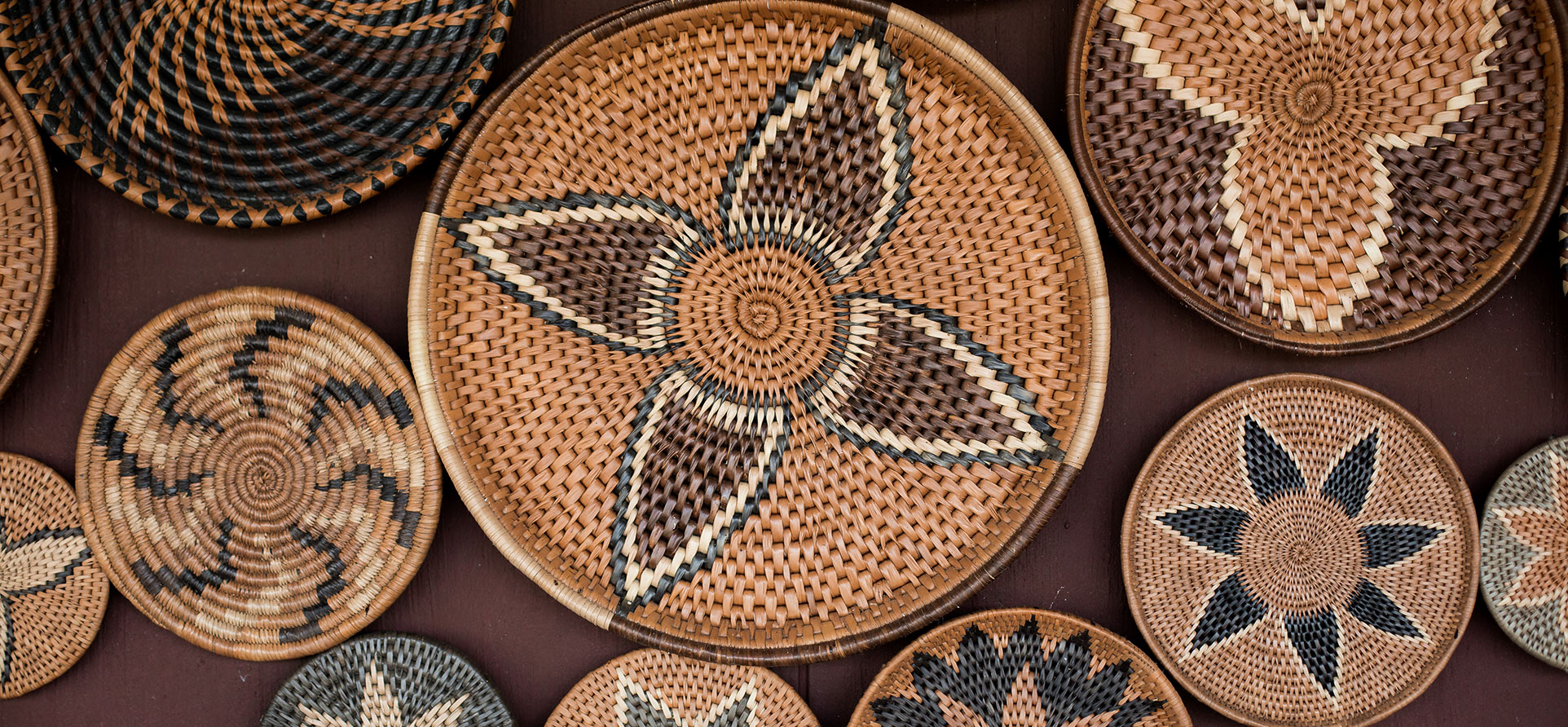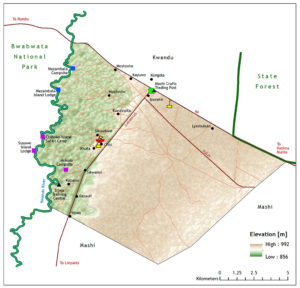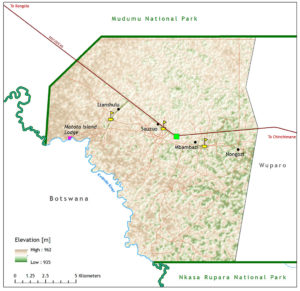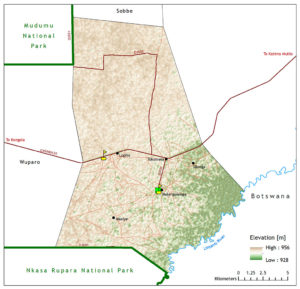KWANDO | LINYANTI
INTRODUCTION
The Kwando-Linyanti area starts in the North on the border of Zambia and goes all along the slow and shallow Kwando river firstly crossing the Bwabwata NP and then Mudumu NP until it meets the Linyanti fault that naturally marks the border between Namibia and Botswana, here the Kwando is now renamed to Linyanti and it flows East along the Nkasa Rupara NP until after the seasonal lake Liambezi is renamed again into Chobe River. From this corner the Savuti channel get, in good rainy seasons, feed by the Kwando flood waters coming all the way from the slopes of Mount Tembo in Angola. Also the Selinda Spillway flows in and out of the Kwando-Linyanti river system in years where the Okavango has exceptional floods. In recent time this last happened in August 2009 after 30 years of falling dry. This is a very dynamic area and the rains in Angola and in Zambia where the catchment area is, dramatically determine the life of people and wildlife living along Kwando-Linyanti. Periods of very dry years cycle with good flooding ones and this changes makes it one of the most interesting areas of the whole Zambezi region. The wildlife in this area is protected in the 3 National Parks and in the many Conservancies. Some of these suffered poaching during many years of wars and conflict in Namibia and Angola, but with peace restored in the 90’s and in the past years a much more active anti-poaching effort, in this area the wildlife has amazingly recovered and now is a major tourist attraction.

BWABWATA NATIONAL PARK
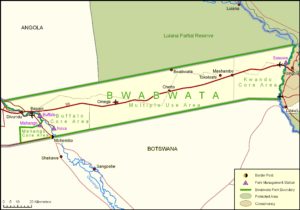 The park was first proclaimed as the Caprivi Game Reserve in 1966 and upgraded to the Caprivi Game Park in 1968. It was gazetted as the Bwabwata National Park in 2007 and incorporated the former Mahango Game Reserve. The park has had a chequered history as it was declared a military area by the South African Defence Force during Namibia’s war of liberation. It was not until after Independence in 1990 that the park could be properly run as a conservation area. A survey was conducted in the park at Independence to investigate the status of the fauna and flora after the military occupation and to assess the circumstances of the 5 000 people living in it. This survey laid the foundation for the current management approach in the park, which incorporates the needs of the people living there. The survey also laid the foundation for the zoning of the park, which has a core conservation area in the west along the Okavango River, a multiple use area in the central part of the park and a core conservation area in the east along the Kwando River. Development of infrastructure, provision of equipment and park planning are being supported by the German Government through KFW and implemented by Namibia Parks Programme (NAMPARKS).
The park was first proclaimed as the Caprivi Game Reserve in 1966 and upgraded to the Caprivi Game Park in 1968. It was gazetted as the Bwabwata National Park in 2007 and incorporated the former Mahango Game Reserve. The park has had a chequered history as it was declared a military area by the South African Defence Force during Namibia’s war of liberation. It was not until after Independence in 1990 that the park could be properly run as a conservation area. A survey was conducted in the park at Independence to investigate the status of the fauna and flora after the military occupation and to assess the circumstances of the 5 000 people living in it. This survey laid the foundation for the current management approach in the park, which incorporates the needs of the people living there. The survey also laid the foundation for the zoning of the park, which has a core conservation area in the west along the Okavango River, a multiple use area in the central part of the park and a core conservation area in the east along the Kwando River. Development of infrastructure, provision of equipment and park planning are being supported by the German Government through KFW and implemented by Namibia Parks Programme (NAMPARKS).
MUDUMU NATIONAL PARK
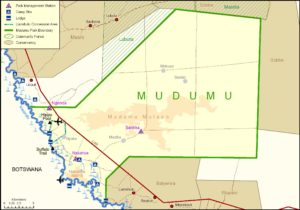 Mudumu National Park, one of Namibia’s least-known parks, is richly rewarding for adventurous visitors. The main attraction is the riverine habitat of the Kwando River, while inland is the Mudumu Mulapo fossilised river course and the dense mopane woodland shelter woodland species. There is no formal entrance gate or park fence – the park is separated from neighbouring communal farmland by a graded cutline. Mudumu is home to a large elephant population. The park acts as a corridor for these pachyderms as they migrate between Botswana, Zambia, Angola and Zimbabwe. In recent years, Mudumu has become the model for co- operation between parks and neighbours. The parks, conservancies, community forests and traditional leaders work together on law enforcement, fire management (early burning), game monitoring and translocations. This evolved from the need to manage common resources across unfenced park and conservancy boundaries.
Mudumu National Park, one of Namibia’s least-known parks, is richly rewarding for adventurous visitors. The main attraction is the riverine habitat of the Kwando River, while inland is the Mudumu Mulapo fossilised river course and the dense mopane woodland shelter woodland species. There is no formal entrance gate or park fence – the park is separated from neighbouring communal farmland by a graded cutline. Mudumu is home to a large elephant population. The park acts as a corridor for these pachyderms as they migrate between Botswana, Zambia, Angola and Zimbabwe. In recent years, Mudumu has become the model for co- operation between parks and neighbours. The parks, conservancies, community forests and traditional leaders work together on law enforcement, fire management (early burning), game monitoring and translocations. This evolved from the need to manage common resources across unfenced park and conservancy boundaries.
NKASA RUPARA NATIONAL PARK
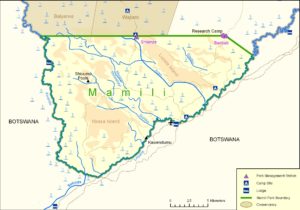 Nkasa Rupara National Park formally known as Mamili National Park was officially proclaimed on 1 March 1990, just days before Namibia gained Independence. This is the largest wetland area with conservation status in Namibia, and is a haven for wetland species. When the flood waters from the Kwando River are high, the park becomes like a mini Okavango Delta. There are about 1 000 buffaloes in Nkasa Rupara, the largest concentration in the country. It is an important corridor for elephants moving from Botswana to Angola and Zambia and is also considered as a core breeding area for wildlife that can disperse into neighbouring conservancies. There are Conservancies in this areas
Nkasa Rupara National Park formally known as Mamili National Park was officially proclaimed on 1 March 1990, just days before Namibia gained Independence. This is the largest wetland area with conservation status in Namibia, and is a haven for wetland species. When the flood waters from the Kwando River are high, the park becomes like a mini Okavango Delta. There are about 1 000 buffaloes in Nkasa Rupara, the largest concentration in the country. It is an important corridor for elephants moving from Botswana to Angola and Zambia and is also considered as a core breeding area for wildlife that can disperse into neighbouring conservancies. There are Conservancies in this areas
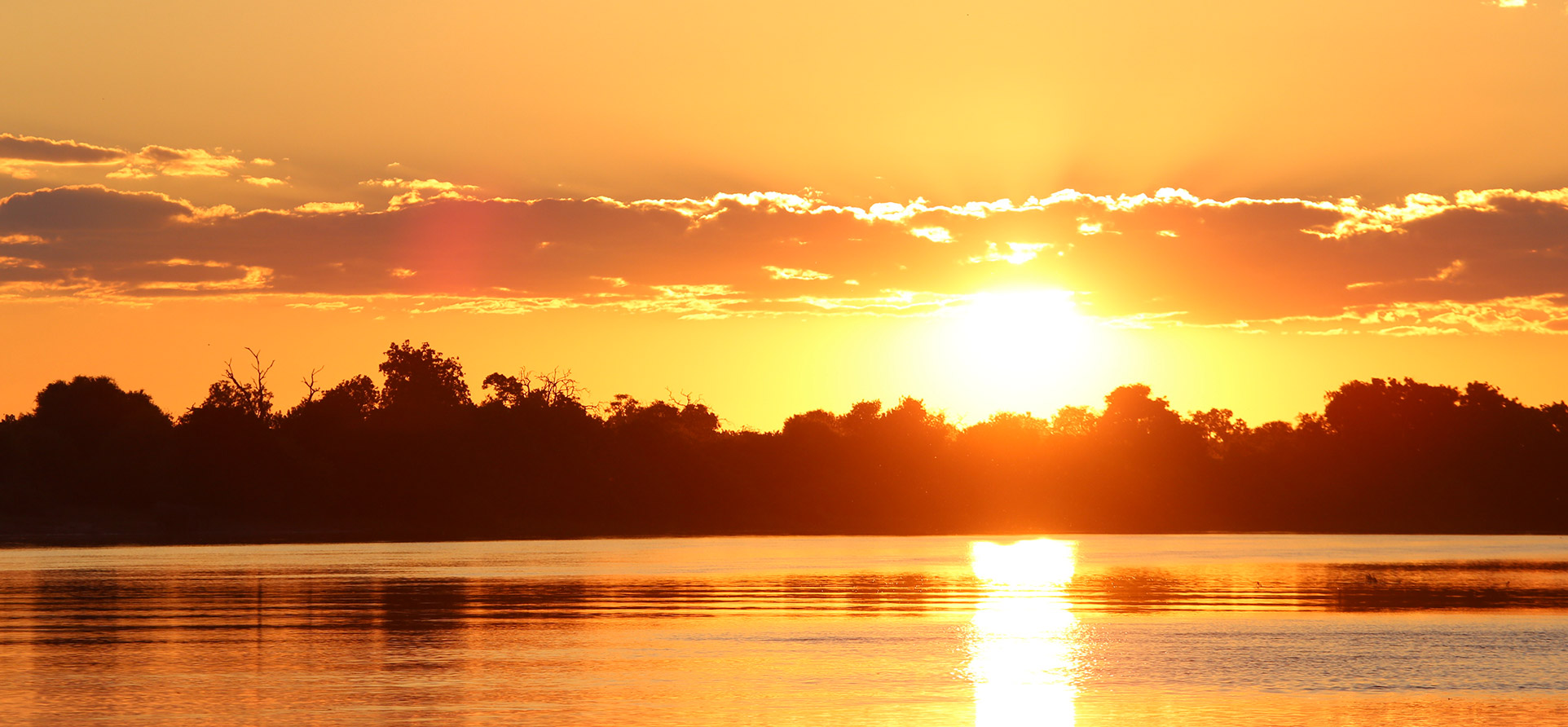
The Conservancies in these area
The Ministry of Environment and Tourism’s conservation vision for Zambezi Region is an impressive plan that outlines its commitment to community consultation, joint venture partnerships and equity in its efforts to achieve conservation and development goals for the region. The region has now embarked on tourism, not as an alternative to traditional livelihoods, but as an additional income source and job creator. Through tourism, people are maintaining their culture because that’s what they can sell to tourists in exchange for money.
Conservancies are established within the region to integrate traditional livelihoods with conservation and tourism. This helps optimise benefits for the community. Furthermore the establishment of conservancies led to the development of two tourism plans: the Tourism Development Plan for the eastern floodplain and the Kwando/Linyanti Tourism Development Plan.
Mayuni Conservancy
The Mayuni Conservancy was established with support from Chief Mayuni, who has been a
strong driving force for conservation in the area.
Quick facts
Registered: December 1999
Area: 151 km2
Approximate population: 2,598
Geographical features:
Average annual rainfall of about 600 millimetres. The Kwando River floodplain is dominated by
grasslands and swamp vegetation, while much of the woodland on higher ground to the east has
been cleared or damaged by frequent fires.
Mashi Conservancy
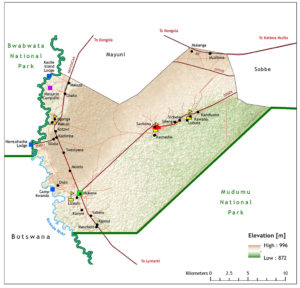 Derived from the name of a tree that produces fruits; also an alternative name for the Kwando
Derived from the name of a tree that produces fruits; also an alternative name for the Kwando
River)
Quick facts
Registered: March 2003
Area: 297 km2
Approximate population: 2,431
Geographical features:
Kwando River and its floodplains, with Kalahari woodlands to the east. Rainfall averages 600 mm
per year.
Balyerwa Conservancy
Wuparo Conservancy
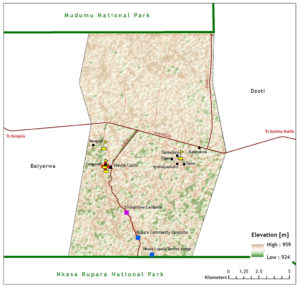 Wuparo means “life” in Siyeyi. The Conservancy was started by the Mayeyi Traditional Authority in
Wuparo means “life” in Siyeyi. The Conservancy was started by the Mayeyi Traditional Authority in
1997 after they found that the community was not reaping the benefits of the natural resources.
Registered: December 1999
Area: 148 km2
Approximate population: 1,027
Geographical features:
This area is very variable, depending on the annual rain fall it transforms itself from a floodplain to
a mosaic of woodland and grassland. Average annual rainfall of 600 mm.
MASHI CRAFT
Mashi Crafts is owned by a voluntary association of local craft makers, approximately 300 plus with the purpose of providing an outlet for their crafts produce. For most of these women, it is their only source of income. Mashi Crafts is a vibrant tourism centre providing not only an out let for craft produce, but also a diversity of information on history, culture and traditions of the people in the area, the local flora and fauna and conservancy activities. It also is an outlet a number of tourism friendly SME businesses selling firewood, honey when in season and devils claw natural remedies.
